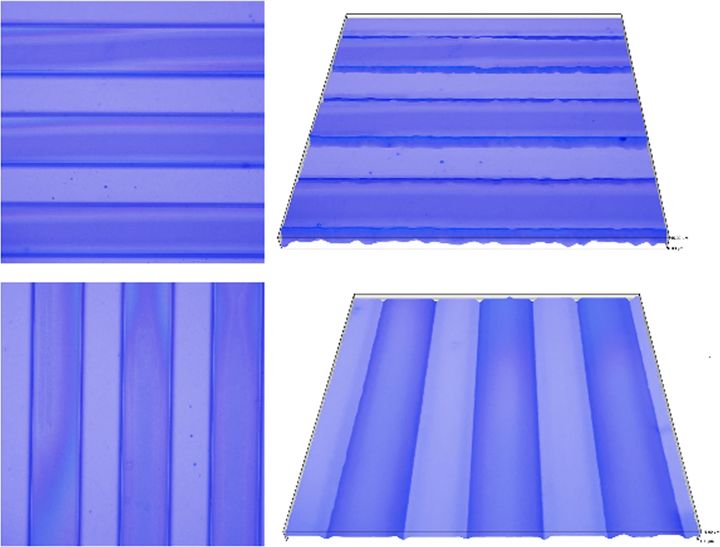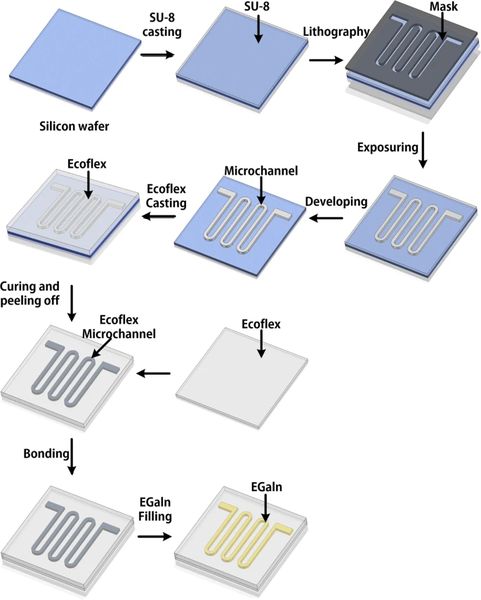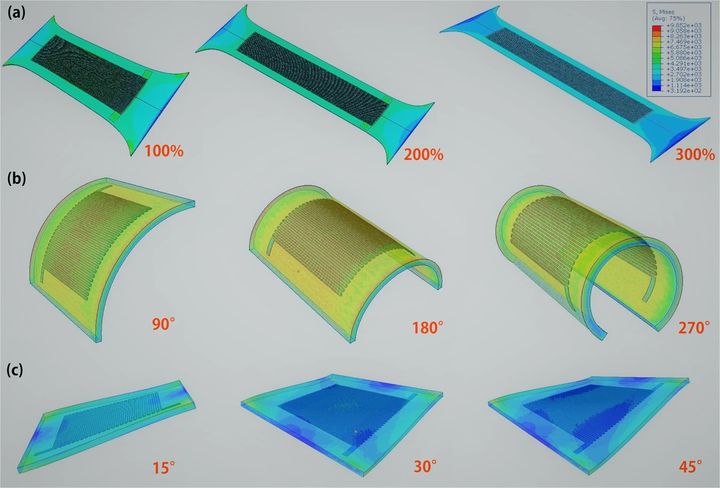
Researchers have developed an unusual type of strain sensor that I think may have an effect on certain types of future 3D printed designs.
There have long been strain sensors in existence, and they’ve been frequently used in various engineering projects, either machines or structures. However, the new research has developed a new form of sensor.
The new design involves liquid metal, as do some current sensors, but now adds a lithography approach.
The idea is to use a process somewhat like that used to produce microchips, but make a sensor out of these materials. Here is an overview of the process used by the researchers:

The strain sensor operates by detecting a deformation in its geometry, as shown by a change in the electrical resistance of the micro channels. Thus a simple electric circuit can be used to read the sensor.
The new feature of this sensor development process is that the sensors can be deformed quite severely. They explain:
“Even if the stretchability was up to 300%, this sensor don’t appear the high stress condition, which can prevent fatigue failure, making the sensor with a high stretchability. This explain the microchannel designed reasonable that don’t damage structure strength of the flexible substrate. The microchannel show uniformity deformation when stretched, contributing to create outstanding linearity sensor and establish the relationship of deformation and resistance change. What’s more, this device doesn’t show high stress when bent and twisted, which illustrates this device can achieve the designated function robustly and effectively, not failing due to high stress fatigue damage.”
Here are some examples of how significant these sensors can be treated:

My thought is that this type of sensor might make its way into 3D design. Today’s advanced 3D printable designs are increasingly using highly complex generated geometries, and these, like any parts, might require strain sensors.
In fact, they may require them more than standard parts, as the goal of many complex designs is to reduce the weight of the part without losing strength. In other words, there isn’t usually “extra” material to take on added mechanical stress.
A method to create a sensor that can take on a variety of shapes and still function could be used in these complex designs. I could see the designs being altered to allow for insertion of such a flexible sensor, either during or post-printing.
This could become much more important when the construction 3D printer industry finally catches on to the idea of unusual geometries. Up to now most construction 3D printing is simply walls, sometimes even curved! But when designs get more complex, we may need to embed sensors to ensure they are safe over the long term.
Via Nature
